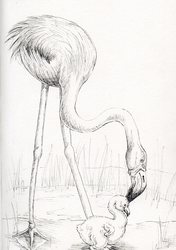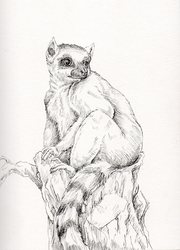Sign In
CloseTotem of the day is Scorpion! If you are confided in by a friend or family member, be sure to keep those secrets confidential. Now is a time to share your love passionately with your partner and to spread platonic affection such as hugs with your close friends. You may be going through a metamorphosis soon that will include ridding yourself of negative influences or people. Be sure to work at controlling your temper during this time and grow through this time of change with smooth and controlled emotions. The Scorpion spirit guide is known for it's connections to control, guardianship, passion, death, survival, and transformation.When Scorpion shows up it can be a reminder to remove negative influences, old mental baggage, or useless items from your home. Scorpion also shows us that we must stop enabling any who are clinging to us in order to focus on improving and moving forward ourselves. Make clear boundaries and decisions for the upcoming time to enhance the strength of your growth through this transformation. This spirit guide has a strong connection to death and rebirth, symbolizing the need to clean out unneeded aspects of your life in order to heal and grow further. The Egyptians saw the Scorpion as a guardian of souls moving from one world to the next and as a creature sacred to the Goddess Selket who was a healer of venomous stings and bites. In Greek tales, the scorpion was a creature who gave out divine judgement such as when Orion was stung and killed for his boastfulness. However, Scorpion also shows us symbols of survival and protection by the way a mother scorpion will carry and protect her young. Scorpion reminds us we can be strong and protective. People who connect with Scorpion are often seen as inspirational to others with the way they express themselves. It is important for these types to be careful about how they act as they have a strong influence and character that can be misused towards others if not careful. This includes having a tough temper that can sometimes be used against those who anger these types. These individuals tend to enjoy passionate interactions with others interspersed with long lengths of solitude. Jobs working with death such as a therapist, mortuary, or hospice worker often coincide with these personalities.
Scorpions,Scorpiones, are carnivorous arthropods that can live between 4 and 25 years old. Belonging to the eight-legged arachnid family, they are most closely related to their distant cousin the spider. These creatures can be found primarily in desert and jungle habitats in the southern hemisphere, however, have adapted to living on all continents except for Antarctica. There are over 1700 species of scorpions with only around 25 of these species possessing venom strong enough to kill a human. Species with stronger stings are generally found throughout western Asia, Africa, and South America. Scorpions are known to be dated as far back as 400 million years ago, meaning they existed even before dinosaurs. A scorpion's body is comprised of two parts: the Tagmata which includes the head and abdomen, and the Metasoma which includes the tail. They are covered in a hard exoskeleton providing protection from predators. Two of their legs are adapted into clawed arms called pedipalps which enable them to snag and hold on to prey with a strong grip. During this, they will use their stinger containing a pair of venom glands to sting and paralyze their prey. The tail is guided not by sight, but by the sensory hairs that grow from it. A scorpion's eyes consist of two eyes on the top of their cephalothorax, or head and thorax area, with 2 to 5 eyes along the front corners. They are unable to see sharp images, however, they have the strongest light sensitive eyes in the animal kingdom. This enables them to see perfectly in dim light and to even navigate using the light of the stars. Being nocturnal, scorpions will be more active hunting and moving at night while staying in shaded areas under crevices or rocks during the hot daylight. A unique feature of scorpions is the occurrence of florescent chemicals such as beta-carboline which causes them to glow a bright blue-green color when exposed to certain ultraviolet lights. The diet of a Scorpion consists primarily of small arthropods, however, due to being opportunistic hunters, larger species will also hunt larger prey such as mice, rats, centipedes, birds, and even opossums. Unique to arthropods in the Chelicerata family such as horseshoe crabs, sea spiders, and arachnids, Scorpions are able to eat with the use of small claw-like structures protruding from the mouth called Chelicerae which help to pull small amounts of food off the prey item. Also similar to spiders, these creatures can only digest liquid food and must liquidize their prey for consumption. Scorpions are able to consume vast amounts of food in one sitting and, due to their low metabolic rate, go between 6 and 12 months without eating food. When reproducing, some species of Scorpion can reproduce through parthenogensis which is an asexual process in which an unfertilized egg can grow into a viable embryo. Most scorpion species reproduce using two partners. Potential partners will find each other using a range of vibrational and pheromone based communication. Afterwards, the male will court his match by grasping her pedipalps in his own and performing a dance. This can include other behaviors such as 'kissing' when the male will grasp the female's chelicerae with his own and, sometimes, will even inject his venom into the edge of her claw. After breeding, the male and female will separate. Often so the male can avoid being eaten. In a process called Ovoviviparity where the eggs will develop within the mother until they are ready to hatch. A female scorpion produces on average around 8 babies, but the size of the litter depends on the species and environment. At times a littler can be between 2 and over a hundred babies. After birth, the young scorpions will remain clinging to their mother's back until their first molt. Before their first molt, the baby scorpions, called scorplings, are unable to regulate their own moisture and must rely on their mother's help to do so. Over time, the Scorplings will undergo a series of molts where they shed their exoskeleton in order to grow larger. Directly after they shed, they are often soft and must continuously stretch in order to ensure they can still move after their new exoskeleton has fully hardened in a process called Sclerotisation. As Sclerotisation occurs, this is when the fluorescence will get stronger. The more moults it has undergone, the stronger their fluorescence will be.
Submission Information
- Views:
- 450
- Comments:
- 0
- Favorites:
- 2
- Rating:
- General
- Category:
- Visual / Traditional




